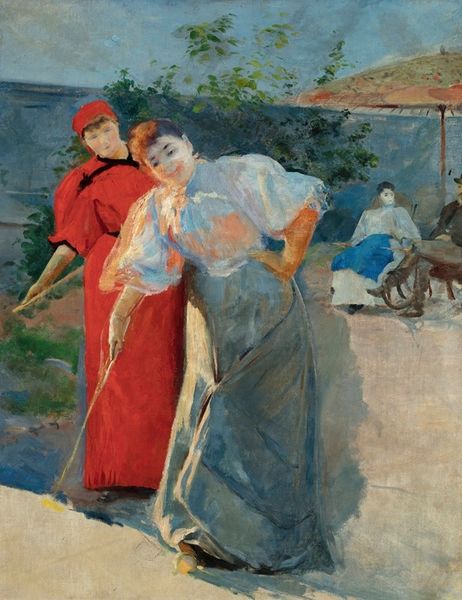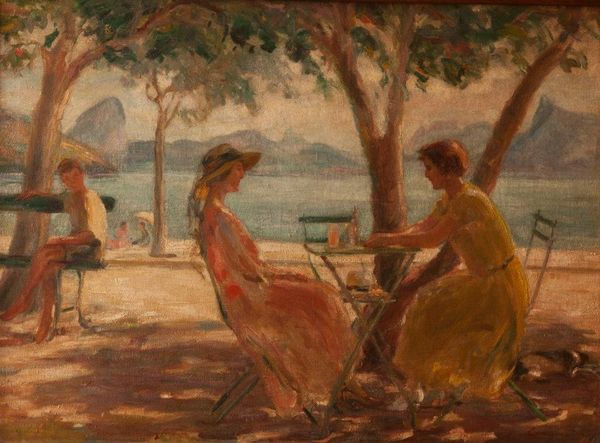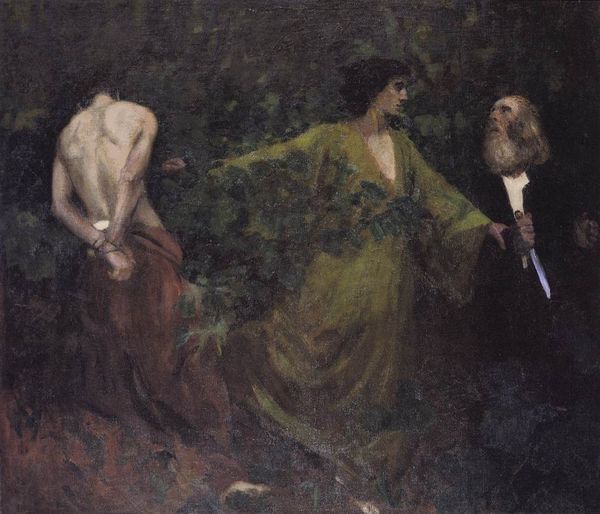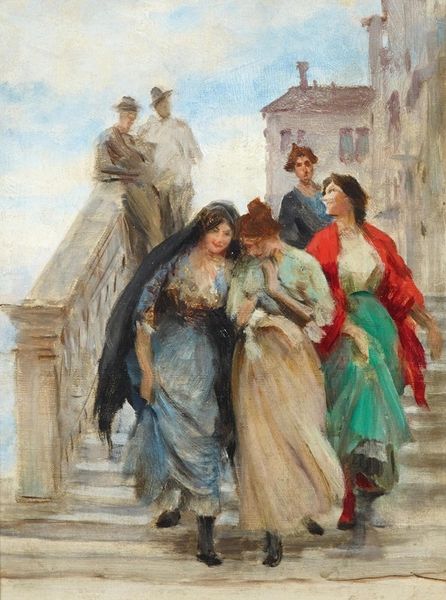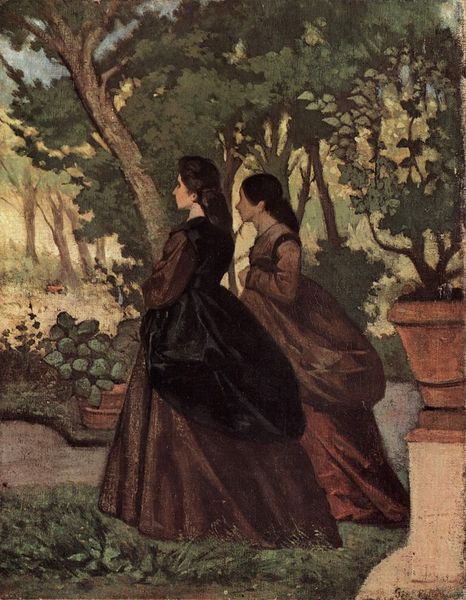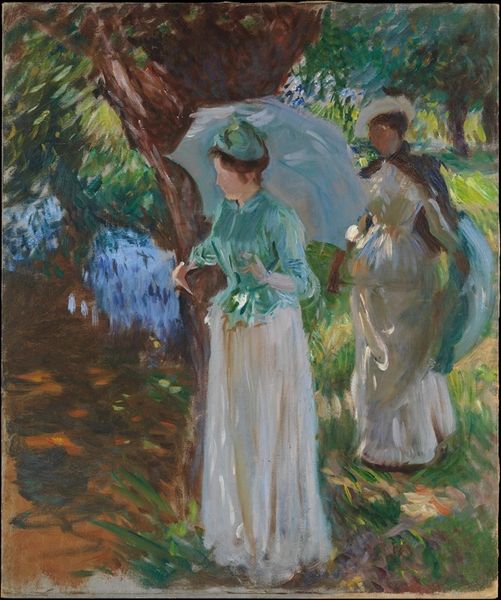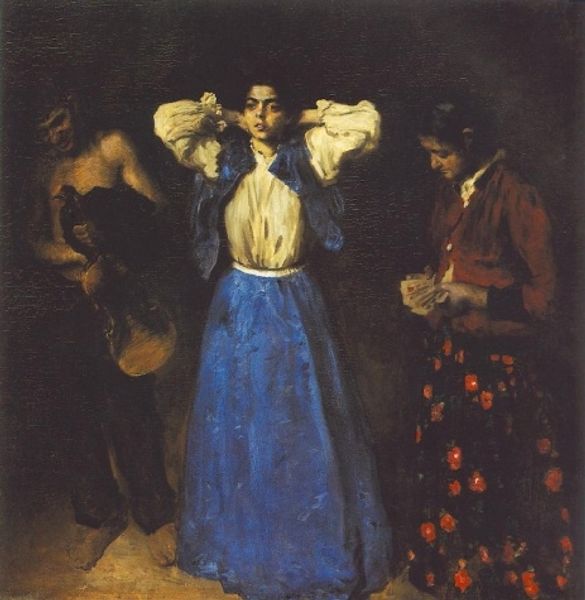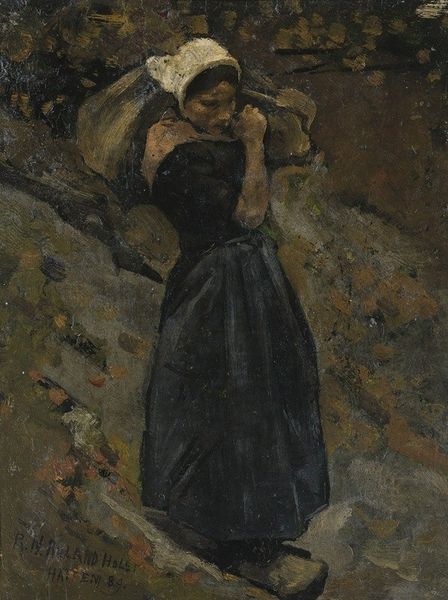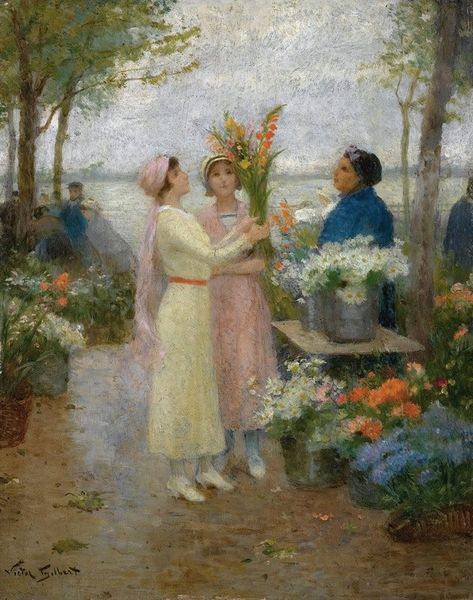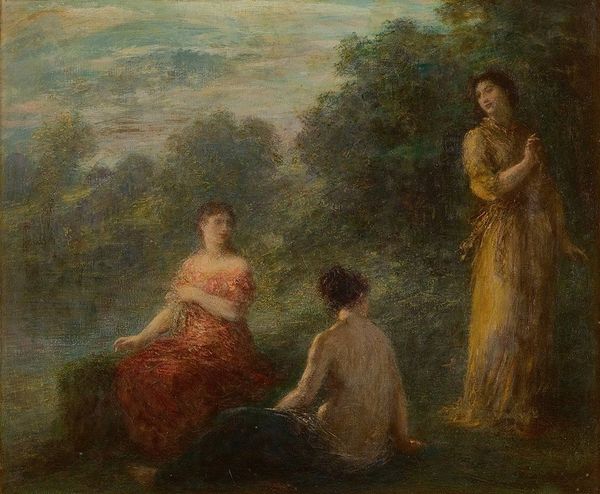
Copyright: Public Domain: Artvee
Curator: Oh, my first thought is lazy summer afternoon, a daydream drifting by like those clouds I think I see back there? Editor: Yes, exactly! We're looking at "A Game of Crocquet," a work rendered in oil paint circa 1895 by Leon Wyczółkowski. It depicts figures, likely women, engaged in leisure on a warm afternoon. Curator: I see all the long shadows; it almost feels like the end of the day, right? And the colors are really luminous – you can feel the heat radiating off the ground. There’s an intimacy, too. Like you've stumbled upon a private scene. Editor: Indeed. Considering its materiality, it shows Wyczółkowski using plein-air techniques and likely studying the interactions of light and shadow firsthand. It fits squarely within an Impressionistic rendering of bourgeois pastimes. Consider how he likely purchased his painting supplies: from paint and brushes, likely crafted in small factories employing local workers, to the canvases prepared through industrial processes. Curator: It also feels a little awkward, somehow, or maybe “awkward” isn’t the right word. Stilted, perhaps? All that intense sun washes the figures and their postures give a bit of uneasy tone. The faces, rendered quite indistinct, add to that impression, you know? They almost feel posed. Editor: I understand. This relates, too, to the broader social context. As the Polish aristocracy and gentry found themselves at the intersection of modernization and tradition, their anxieties and shifting self-perceptions often materialized through art, like anxieties of class, labor, and visibility. Wyczółkowski himself navigated those same circles. Curator: That rings true. I still wonder about those faces, though... They lack definition. Maybe it mirrors their positions—bound by expectation and a world they were born into, not one they consciously constructed? Editor: Potentially. Reflecting upon it, I see "A Game of Crocquet" not just as an Impressionistic snapshot but also as a study of class, material culture, and perhaps an underlying uncertainty amidst the cultivated leisure of the fin de siècle. Curator: It has a quiet, powerful complexity hiding just under a sweet surface. Editor: Agreed. It encourages us to question what really lies beneath idyllic scenes and reflect upon what they reveal about both subject and context.
Comments
No comments
Be the first to comment and join the conversation on the ultimate creative platform.
